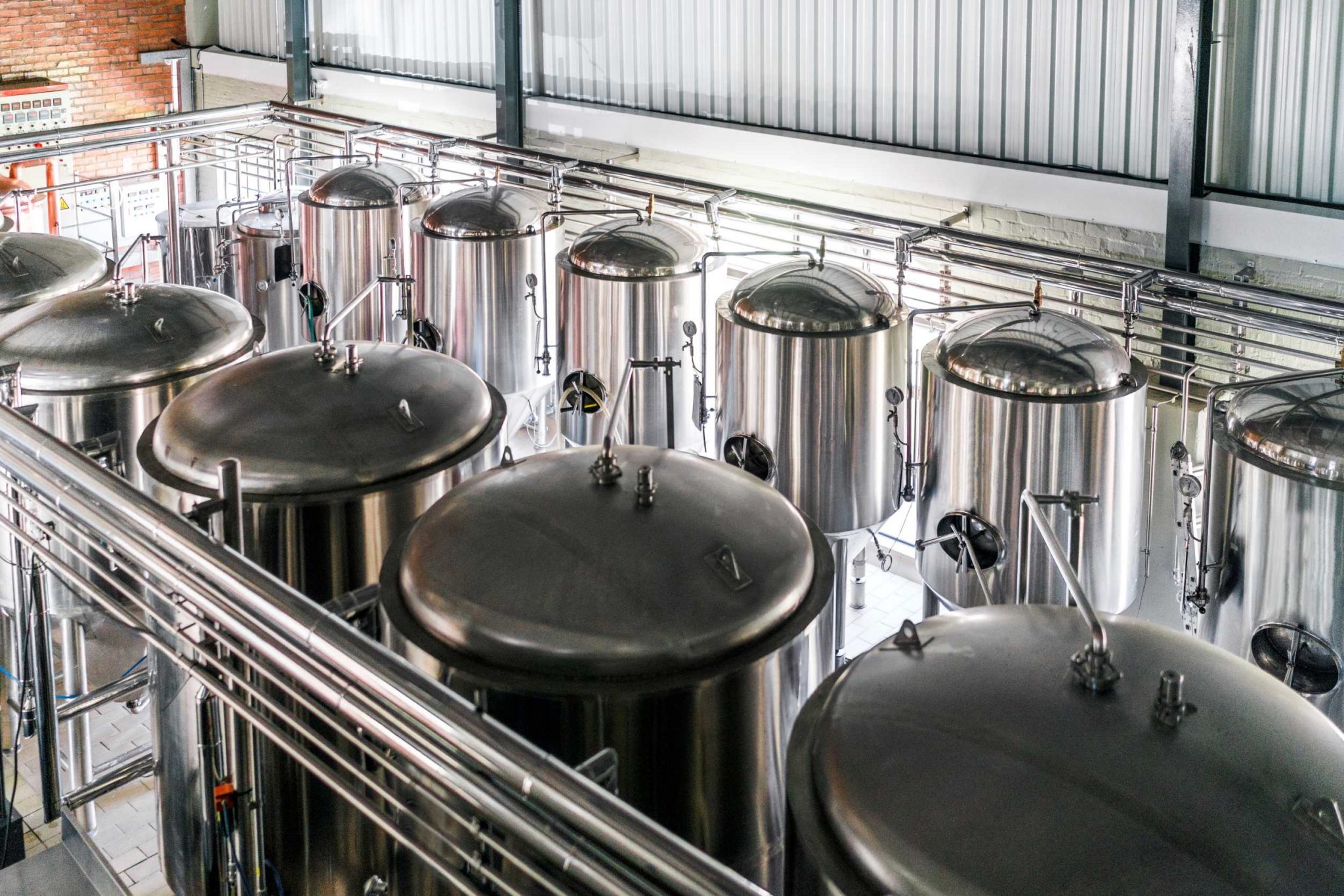Alcohol and fermentation
Why are these operations a concern?
This industry has the potential to release large volumes of high-strength wastewater into the City’s wastewater system. The amount and strength of this wastewater can stress the treatment capacity of the receiving wastewater treatment plant. Individual operations may contribute smaller quantities of these substances however collectively, impact from the industry can be significant.
| Substances of concern | Sources |
|---|---|
| Organics (BOD) | Alcohol, sugars, yeast, raw materials |
| Solids | Spent grains, pulp, fruit, hops, trub |
| pH | Acidic final product, acidic and caustic cleaning solutions |
| Nutrients | Organic source materials |
| Temperature | Boiling and fermenting process |
Pre-treatment options
Solids management
Install screens, filters or baskets within the process stream. Keep solids from hitting the ground and prevent material from entering floor drains. Solids may have value as animal feed or compost.
Biological Oxygen Demand (BOD) reduction
Divert concentrated sources of waste rather than mixing and releasing to the wastewater system. Once segregated this high strength waste can either be treated or hauled away for offsite disposal. Ensure spilled product does not enter floor drains. Some of the options to reduce BOD in effluent are Anaerobic (commonly used in breweries) or Aerobic Digestion, Membrane Filtration, Advanced Oxidation, Electrochemical Methods or Activated Carbon treatment.
pH treatment
The Wastewater Bylaw 14M2012 states wastewater pH must fall between 5.5 and 10.0. This can be achieved, for example, by adjusting effluent pH through a pH Equalization/Neutralization Tank prior to releasing to the wastewater system.
Maintenance record
When maintaining a pre-treatment system, it is important to keep records of any activities completed. Records are required to be kept onsite for minimum of two years.
Wastewater Surcharge Program
Untreated, high strength effluent likely contains one or more substances at a concentration that would fall under the Wastewater Surcharge Program. To recover costs incurred for the treatment of high strength effluent a surcharge may be applied to your monthly water bill.
The table below shows the average effluent quality of alcohol and fermentation wastewater and how it would translate to a surcharge bill. The surcharge has been broken down by parameter and range of cost by $/m3 of wastewater generated.
| Parameter | Bylaw limit | *Typical industry average | **Approximate surcharge $/m3 |
|---|---|---|---|
| BOD (mg/L) | 300 | 8,500 | 11.83 |
| TSS (mg/L) | 300 | 1,600 | 1.49 |
| pH | 5.5 - 10 |
* Ranges and average determined from numerous North American literature reviews
** Approximate surcharge rate based on typical industry average
Resources
The below PDFs were designed to be filled in with Adobe Acrobat Reader. Download the form to your desktop and use Adobe Acrobat Reader to open, complete and submit this form. If you are using Edge or Chrome browser some fields will not work as intended and your form may not submit.
City of Calgary Bylaws:
Permits
Forms
- E1995-Analytical Results Reporting Form
- E1996-Clear Water Waste Disposal Application
- E1998-Hauled Wastewater Disposal Manifest - FOG
- E1999-Hauled Wastewater Disposal Manifest - Septage
- E2005 Food truck log book
- E2225-Non-Compliant Wastewater Investigative Report Template
- E2226-Pool Drain Request Form
- E2227-Pre-Treatment Maintenance Record Sheet
- E2228 – Fats, oils and grease interceptor service record
- Nuisance Water Disposal Flowchart
Fact Sheets
Alberta Environment & Protected Areas
What to do if you have an unintentional release
In the event of an unintentional release, it is important to act quickly to prevent the material from entering the wastewater or stormwater system. You should notify:
- 911
- The City of Calgary by contacting 311.
- The owner of the premise where the release occurred.
- Any other person that may be affected by the release.
For any spills that could harm the environment you will also need to report the spill to Alberta Environment & Protected Areas (1-800-222-6514).


